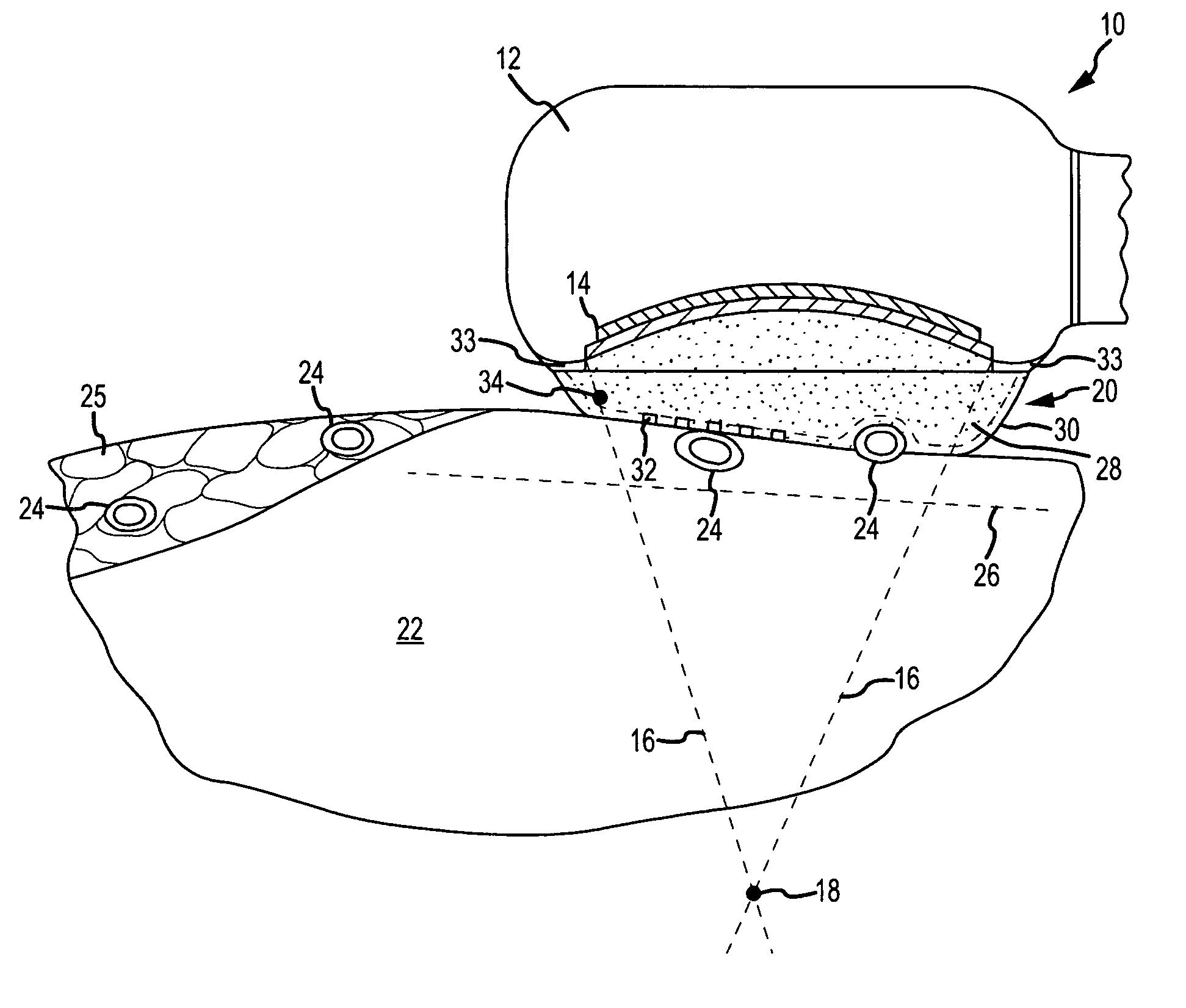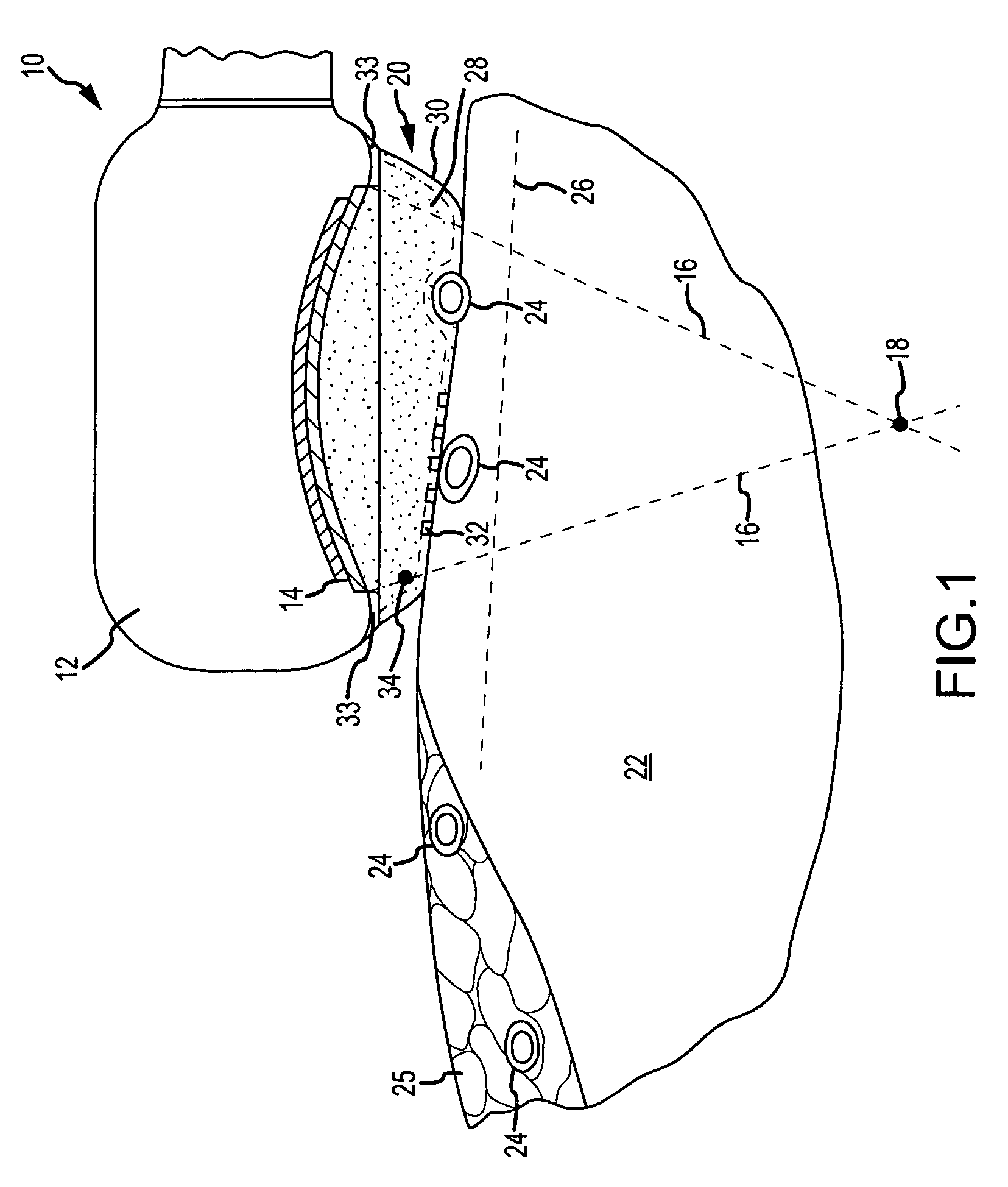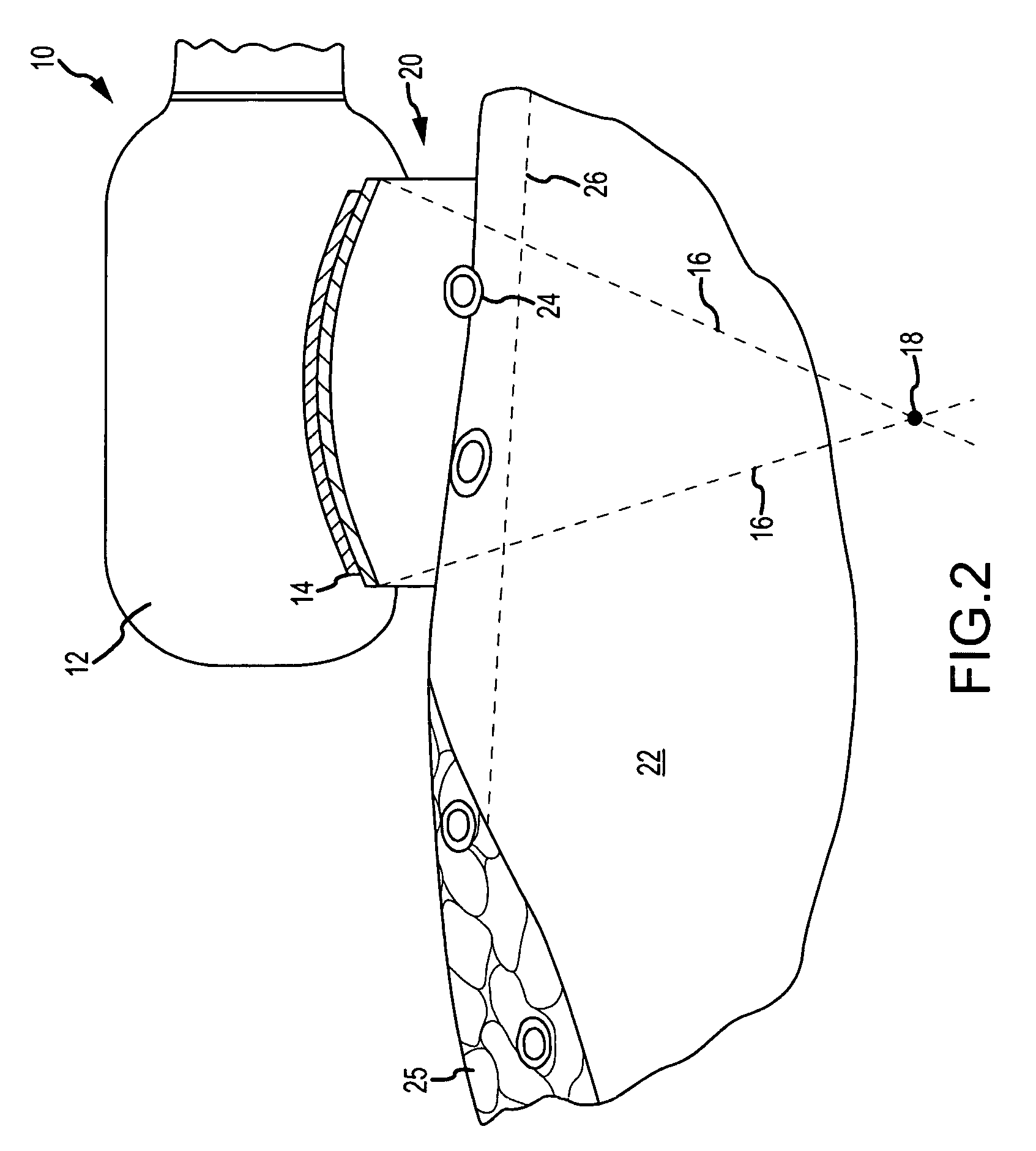Apparatus and method for tissue ablation with near-field cooling
a tissue and near-field cooling technology, applied in the field of atrial fibrillation ablation devices and methods, can solve the problems of many ablation techniques not being able to effectively deliver sufficient ablative energy, difficult to create effective sub-surface lesions, thermal necrosis,
- Summary
- Abstract
- Description
- Claims
- Application Information
AI Technical Summary
Benefits of technology
Problems solved by technology
Method used
Image
Examples
first embodiment
[0028]FIG. 1 depicts a tissue ablation system 10 according to the present invention. Tissue ablation system 10 includes a probe, the distal end portion 12 of which is shown in FIG. 1. As used herein, the term “probe” refers to any device suitable for introducing a diagnostic or therapeutic medical device, such as the ablating transducer discussed in further detail below, into a patient's body. Thus, the term “probe” encompasses catheters, scopes, introducers, sheaths, and the like, regardless of whether controlled manually or via a robotic control system. Suitable probes include, but are not limited to, the structures disclosed in U.S. patent application Ser. No. 11 / 646,526, including the related patents and patent applications incorporated by reference therein, the entire disclosures of which are hereby incorporated by reference as though fully set forth herein. As will be familiar to the ordinarily skilled artisan, the proximal end portion (not shown) of the probe may include a ha...
second embodiment
[0044]FIG. 2 illustrates tissue ablation system 10 that is substantially similar to the embodiment of FIG. 1. In FIG. 2, however, heat removal element 20 is a heat sink instead of a convective heat removal element. As used herein, the term “heat sink” refers to an element that at least conducts heat, and which may also radiate heat and provide for convective heat transfer (e.g., to surrounding air). Typically, the heat sink will be solid or solid like and be metallic or metal-containing, though the use of non-metallic heat sinks (e.g., chambers filled with gel) is regarded as within the spirit and scope of the present invention. One of ordinary skill in the art will appreciate that the acoustic energy emitted by transducer 14 will “stir” any flowable material within heat removal element 20, even if totally sealed therein; this effect is useful and desirable in isothermalizing heat removal element 20. Moreover, this “stirring” also results in convective heat transfer into heat remova...
PUM
 Login to View More
Login to View More Abstract
Description
Claims
Application Information
 Login to View More
Login to View More - R&D
- Intellectual Property
- Life Sciences
- Materials
- Tech Scout
- Unparalleled Data Quality
- Higher Quality Content
- 60% Fewer Hallucinations
Browse by: Latest US Patents, China's latest patents, Technical Efficacy Thesaurus, Application Domain, Technology Topic, Popular Technical Reports.
© 2025 PatSnap. All rights reserved.Legal|Privacy policy|Modern Slavery Act Transparency Statement|Sitemap|About US| Contact US: help@patsnap.com



